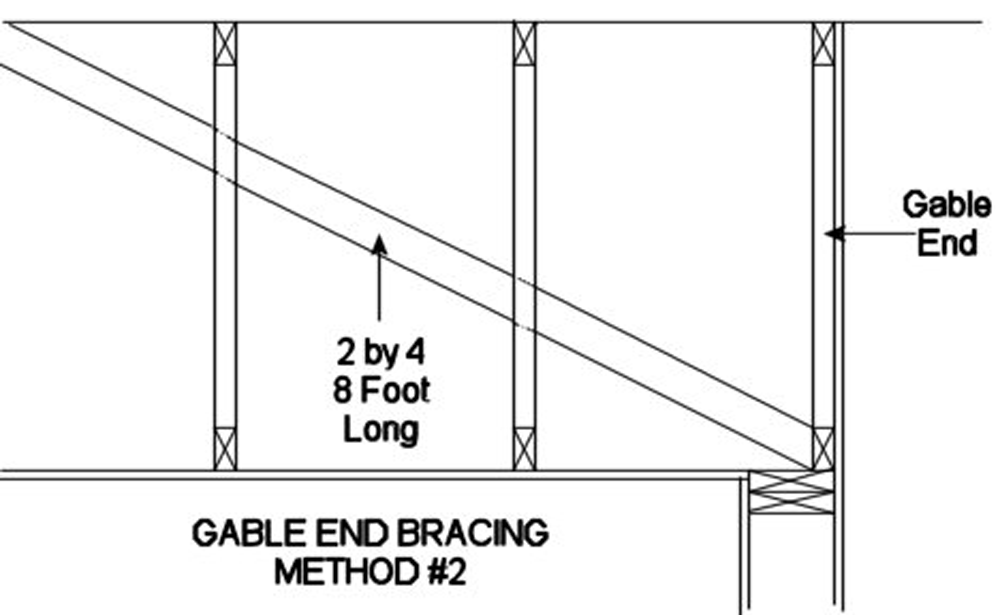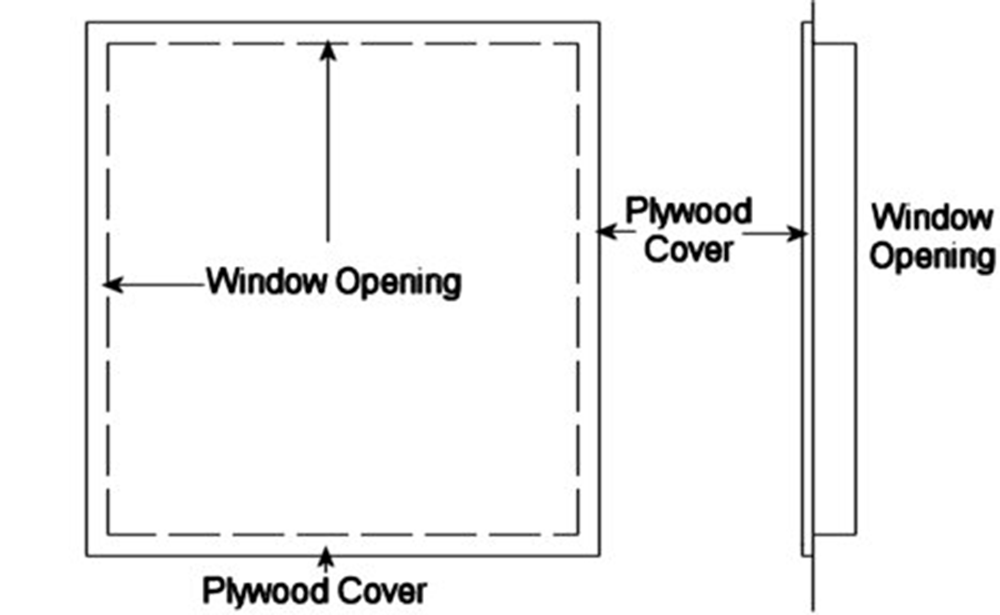Retrofitting Your Home for Hurricanes
There are a few different areas where you can retrofit your home to make it more hurricane resistant.
A major area that causes structural failure during a hurricane is the gable end truss. A gable end is the flat area of the house — it is usually located on each side and appears to form a triangle shape.
1. Gable End Bracing
There are two methods to brace the gable end truss. Method #1 is as follows:

- Start by nailing a two-by-four eight feet long to the gable end up near the ridge of the roof. This brace will run perpendicular to the gable end and be nailed off to each of the next three to four trusses.
- Cut some two-by-four blocking that will fit between each truss and nail them in place at the bottom cord near the ceiling line.
- Nail another two-by-four eight feet long along the bottom of the trusses, just above the blocking previously installed.
Method #2: An alternative to the first method is to nail a two-by-four eight feet long on a diagonal:

For the second method, the bracing should be reversed on the next brace you install after the center brace. That is, the second brace should be nailed at the bottom of the gable end and run upward, so you have a good cross bracing on the gable end.
The second method is simpler, but it may not be as effective as the first method. Whichever method you choose, you should start in the center of the gable end, at the highest point, and repeat your work on either side of the center.
2. Window and Door Protection
The Florida Building Code defines the open protection requirements on all new and remodeled homes. Even if you do not have a newer home, you can still use many of those same same techniques to protect it.
One option is to replace all of your current windows with impact-resistant windows, which are designed to withstand flying debris. Even if they break, they will still maintain their structural integrity and will not allow wind and rain into your home.
Another method is to install approved storm shutters. There are several different types of shutters:
- Roll-down — These are a permanent installation and should be done by a professional installer. You should verify that you are getting a state-approved model with one of the following labels: ASTM E 1886 and ASTM E 1996, or Miami-Dade TAS 201, 202 and 203.
- Accordion — Another permanent installation, these are used mainly for large openings such as glass sliding doors.
- Individual panel / slats — These are not permanently installed, so you will need a place to store them.
The final (and cheapest) option is to use plywood to protect your windows. The Florida Building Code does not allow for anything less than 7 / 16 inch-thick plywood. Particle board is not allowed. The plywood can be exterior grade, which is normally sold at a lower price, and it needs to be attached to the structure — not cut to fit within the opening:

You can use many different types of anchoring devices, as long as the hardware is corrosion resistant and permanently attached to the building. We recommend you research different options and choose the one that works best for you.
In addition to your doors and windows, you should also protect your garage door. A garage door failure can be just as catastrophic to your structure, much like any other door or window. We recommend you install one of the modern hurricane-rated garage doors, which are reinforced with heavy metal bracing that runs horizontally, as well as heavy rollers, roller tracks and mounting hardware. Unfortunately, there isn’t much you can do to your existing door if it is not one of these newer types.